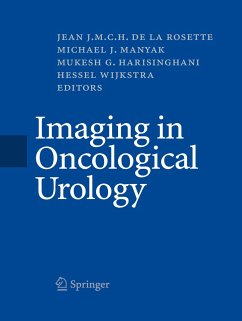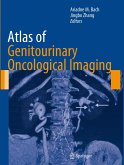Thepastdecadehasseendramaticadvances inurologyandimaging. Thesechangesareevident in improvements in laparoscopic surgery as well as in the emergence of multidetector CT, with multiplanar reformatting and FDG-PET-CT as routine imaging methods. The new minimally invasive procedures often require more exacting imaging as the surgeon does not have the same visual ?eld of view as was possible with open procedures. Thus, it is appropriate now to p- vide an update on imaging advances for the bene?t of urologists and radiologists alike. The increasing number of innovative imaging approaches to urologic tumors including CT, MRI, PET, SPECT, and endoscopic imaging can be perplexing and lead to over- and underesti- tions of the capabilities of modern imaging on the part of those who interpret them and those who use the information they provide for patient management. There is a growing "exp- tations gap" between what is expected and what is possible that needs to be closed. While previous books have focused on the more common urologic tumors such as bladder, prostate, andkidneycancer,nonehasattemptedacomprehensivereviewofthestateoftheartofimaging in most of the tumors involved in urologic oncology. Imaging in Urologic Oncology addresses these challenges. In the modern imaging department it is easy to forget how useful conventional plain rad- graphy can be in urologic diagnosis. Much of our current understanding of urologic disease is based on the "classic appearance" on intravenous urograms, cystograms, or retrograde pye- grams. Therefore, conventional imaging provides the ?rst "layer" in our understanding of u- logic tumors. The next layer is cross-sectional imaging.
From the reviews:
"The target audience is healthcare professionals ... including urologists, radiologists, oncologists, and specialized ancillary staff such as technologists and nurses. The book may be useful to community and academic physicians seeking an in-depth understanding of urologic imaging in oncology. ... This book provides a comprehensive, state-of-the-art discussion of all imaging modalities relevant to specific urologic malignancies. ... it may be especially useful for clinicians who work in a multidisciplinary urologic oncology setting." (Vamsi Vasireddy, Doody's Review Service, April, 2009)
"This book provides an excellent review of the most common tumors in urologic oncology ... . The intended audience is radiologists, urologists, and their trainees, but other health care providers who can benefit include nuclear medicine physicians, urologic oncologists, radiation therapists, physician assistants, nurses, and the medical directors of third party-payers. This is a highly recommended book that should be in the reference libraries of these health care providers and in medical libraries ... . The images, diagrams, figures, and references are excellent." (Aurelio Matamoros Jr., Journal of Nuclear Medicine, July, 2010)
"The target audience is healthcare professionals ... including urologists, radiologists, oncologists, and specialized ancillary staff such as technologists and nurses. The book may be useful to community and academic physicians seeking an in-depth understanding of urologic imaging in oncology. ... This book provides a comprehensive, state-of-the-art discussion of all imaging modalities relevant to specific urologic malignancies. ... it may be especially useful for clinicians who work in a multidisciplinary urologic oncology setting." (Vamsi Vasireddy, Doody's Review Service, April, 2009)
"This book provides an excellent review of the most common tumors in urologic oncology ... . The intended audience is radiologists, urologists, and their trainees, but other health care providers who can benefit include nuclear medicine physicians, urologic oncologists, radiation therapists, physician assistants, nurses, and the medical directors of third party-payers. This is a highly recommended book that should be in the reference libraries of these health care providers and in medical libraries ... . The images, diagrams, figures, and references are excellent." (Aurelio Matamoros Jr., Journal of Nuclear Medicine, July, 2010)









